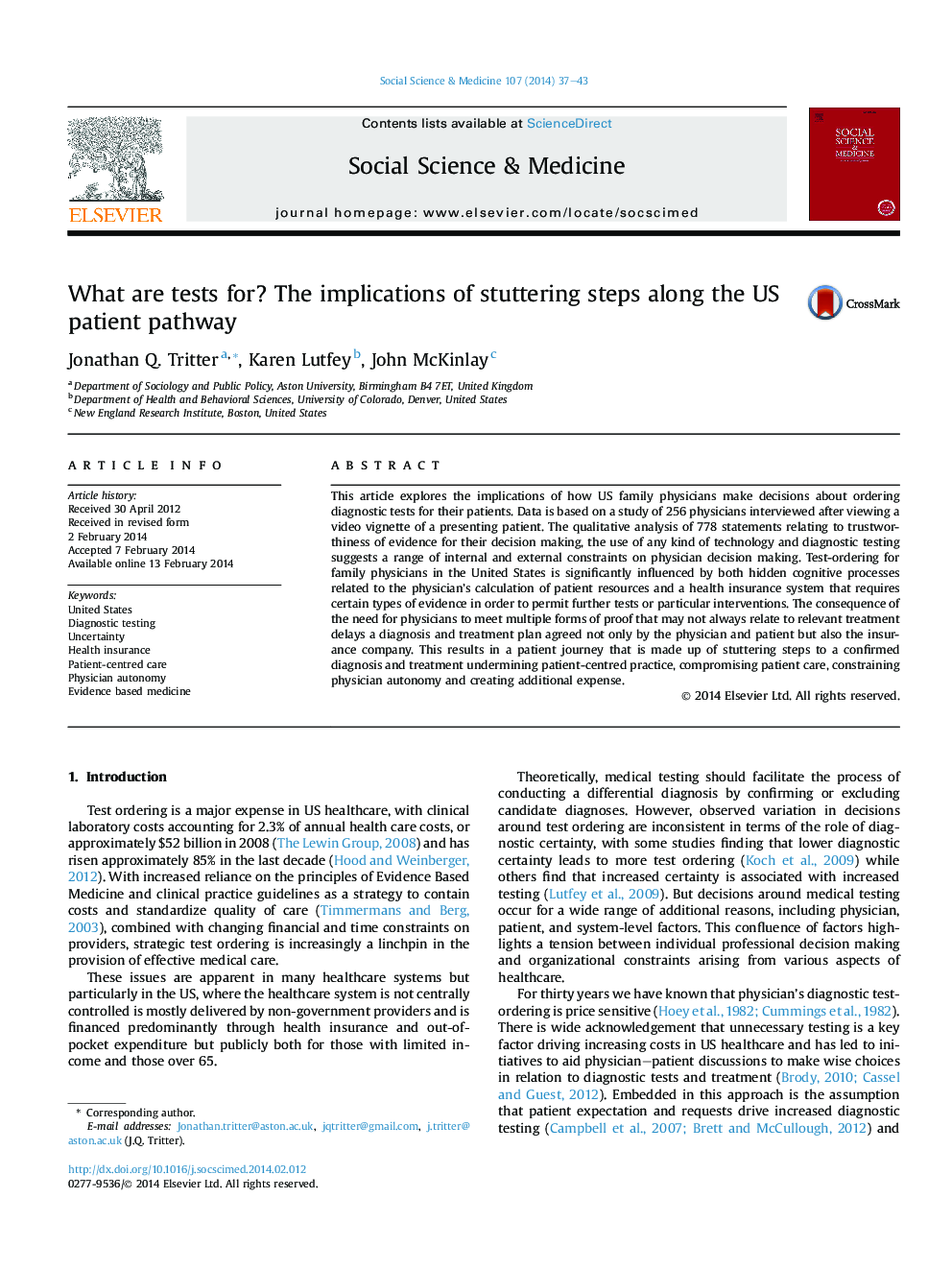| Article ID | Journal | Published Year | Pages | File Type |
|---|---|---|---|---|
| 7335432 | Social Science & Medicine | 2014 | 7 Pages |
Abstract
This article explores the implications of how US family physicians make decisions about ordering diagnostic tests for their patients. Data is based on a study of 256 physicians interviewed after viewing a video vignette of a presenting patient. The qualitative analysis of 778 statements relating to trustworthiness of evidence for their decision making, the use of any kind of technology and diagnostic testing suggests a range of internal and external constraints on physician decision making. Test-ordering for family physicians in the United States is significantly influenced by both hidden cognitive processes related to the physician's calculation of patient resources and a health insurance system that requires certain types of evidence in order to permit further tests or particular interventions. The consequence of the need for physicians to meet multiple forms of proof that may not always relate to relevant treatment delays a diagnosis and treatment plan agreed not only by the physician and patient but also the insurance company. This results in a patient journey that is made up of stuttering steps to a confirmed diagnosis and treatment undermining patient-centred practice, compromising patient care, constraining physician autonomy and creating additional expense.
Keywords
Related Topics
Health Sciences
Medicine and Dentistry
Public Health and Health Policy
Authors
Jonathan Q. Tritter, Karen Lutfey, John McKinlay,
